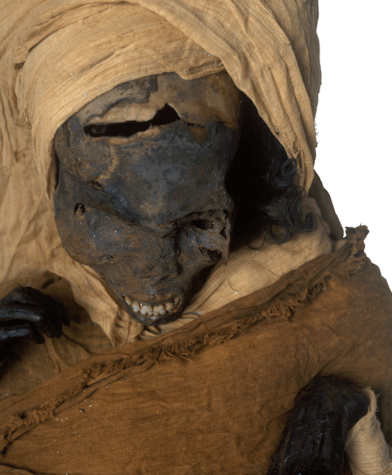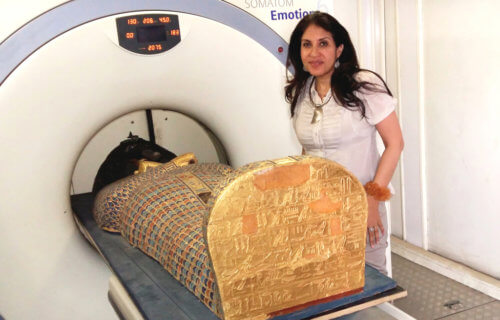CAIRO, Egypt — From King Tut to Cleopatra, many people still treat the Egyptian pharaohs like royal rock stars 3,000 years after their deaths. A new study may have just unraveled the mystery surrounding one ruler’s shocking death. A researcher from Cairo University says Pharaoh Seqenenre-Taa-II was likely killed in a ceremonial execution at the hands of several attackers.
It’s a stunning end for such a revered figure in ancient Egyptian culture, but the study finds there’s a good reason for this. Researchers say Seqenenre-Taa-II, the Brave, briefly ruled Southern Egypt during a period when the country was under the rule of a foreign dynasty. The Hyksos occupied Egypt during the 16th century B.C.
Scholars have debated how the ancient king died since discovering his mummified remains in the 1880s. Through X-rays taken in the 1960s, historians uncovered several head wounds but no other severe wounds to the body. This has led many to assume Seqenenre-Taa-II died in one of two ways. The first is that the ruler was put to death by the Hyksos. The second being that Seqenenre-Taa-II was murdered in his sleep during a palace conspiracy.
Now, using modern medical science, Dr. Sahar Saleem is revealing a more detailed explanation for the king’s fatal wounds. Saleem suggests that the pharaoh actually died close to the battlefield between the ancient Egyptians and the Hyksos. After being captured and given a ceremonial execution, the ruler was then skillfully mummified to conceal his injuries.
Ancient clues may disprove old theory about pharaoh’s demise
Until now, archaeologists assumed Seqenenre-Taa-II’s embalming was a quickly arranged event that did not take place in the royal mummification workshop. This is because of the poor condition the king’s remains were found in years ago.

Despite this, new computed tomography (CT) scans find the ancient leader actually had a complex and expert embalming after death. According to the scans, embalmers used a sophisticated technique that hid the king’s wounds under a layer of embalming material. This served the same function that fillers do in present day plastic surgeries. Researchers say such a procedure could only have been carried out in a professional mummification lab of that era. The king was also around 40 years-old at his time of death, according to the new tests.
As for Seqenenre’s wounds, the scans reveal the king likely had his hands tied behind his back at the time of his death. Images of the pharaoh’s arms find they were likely dislocated after being bound for execution. Study authors also find the head wounds come from five different Hyksos weapons.
“This suggests that Seqenenre was really on the front line with his soldiers risking his life to liberate Egypt,” Dr. Saleem says in a media release. “In a normal execution on a bound prisoner, it could be assumed that only one assailant strikes, possibly from different angles but not with different weapons. Seqenenre’s death was rather a ceremonial execution.”
Did his death spark a revolution?
Despite failing to retake ancient Egypt, researchers say Seqenenre’s death may have sparked the events which unified Egypt around 1550 B.C.
Unlike famous kings such as Hatshepsut, Tutankhamun, Ramesses III, Thutmose III, and Rameses II, the new findings point to Seqenenre-Taa-II being the only one to fight with his troops in ancient times.
“Seqenenre’s death motivated his successors to continue the fight to unify Egypt and start the New Kingdom,” the researcher concludes.
The study appears in the journal Frontiers in Medicine.
